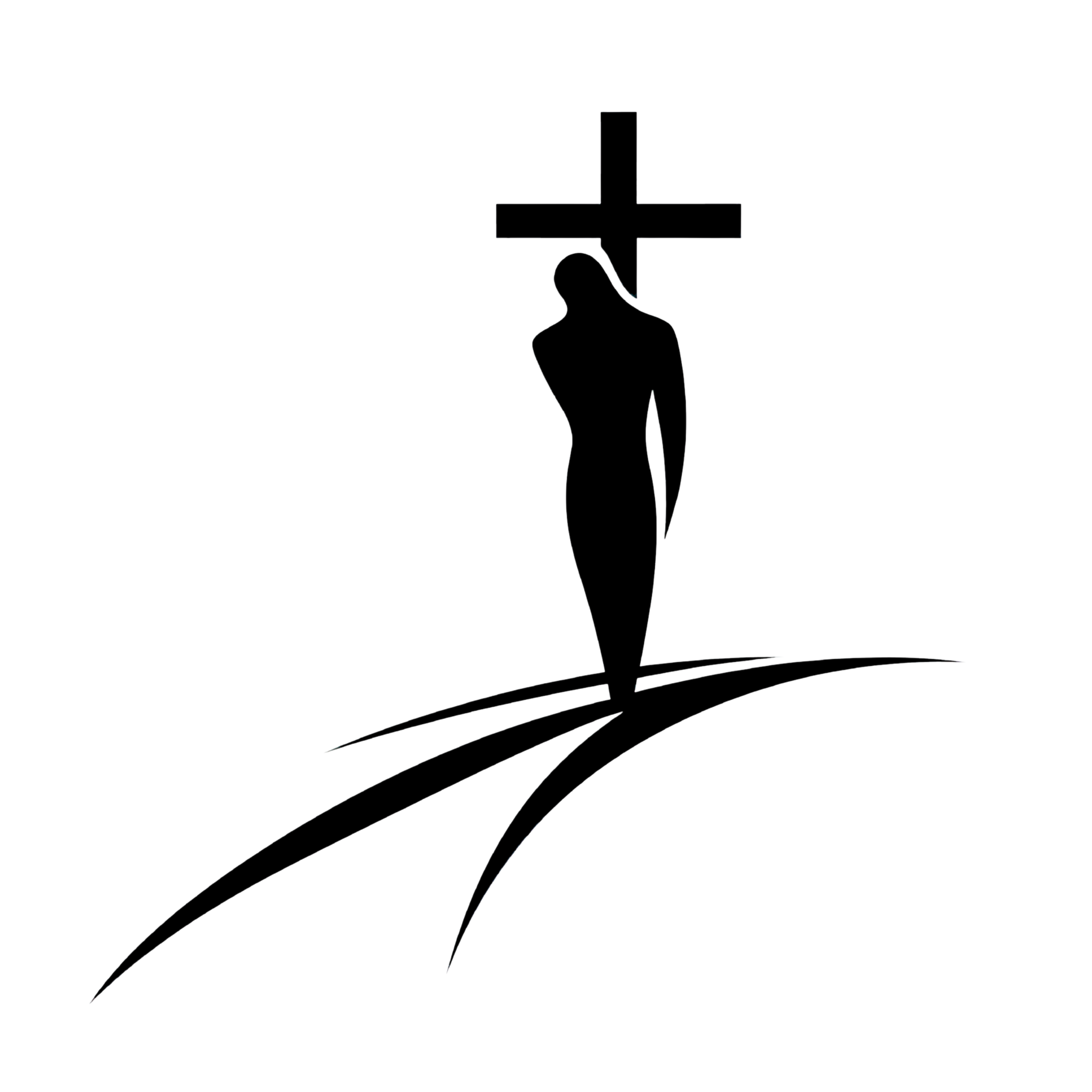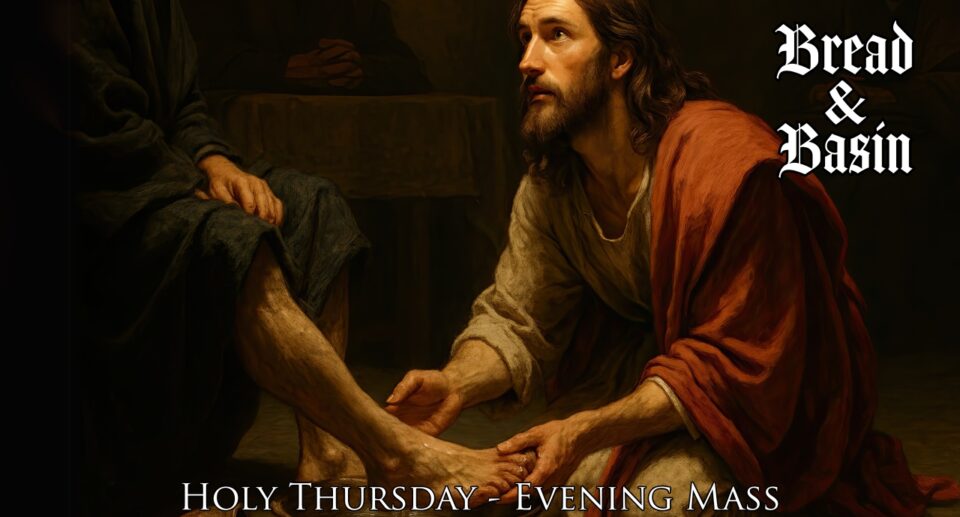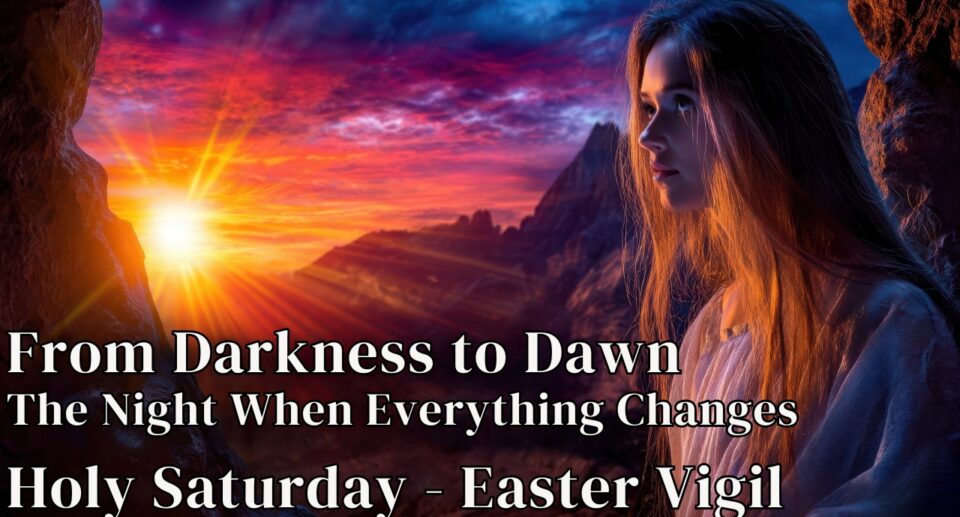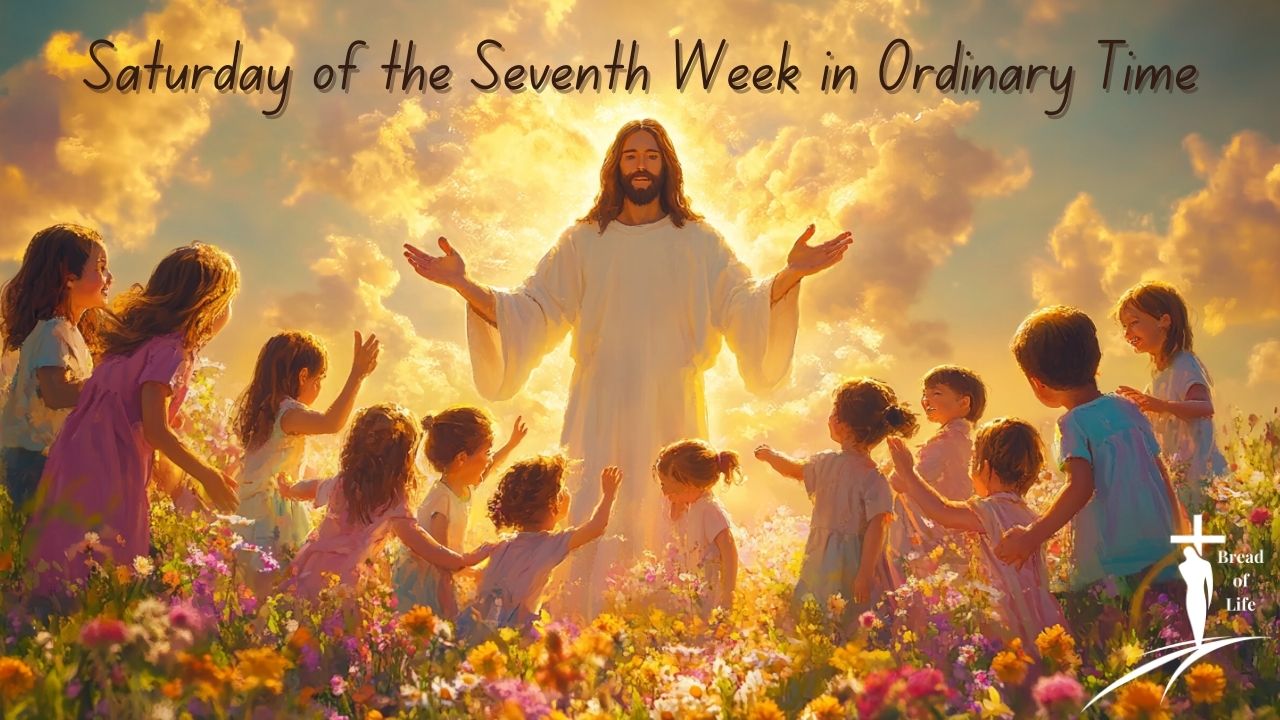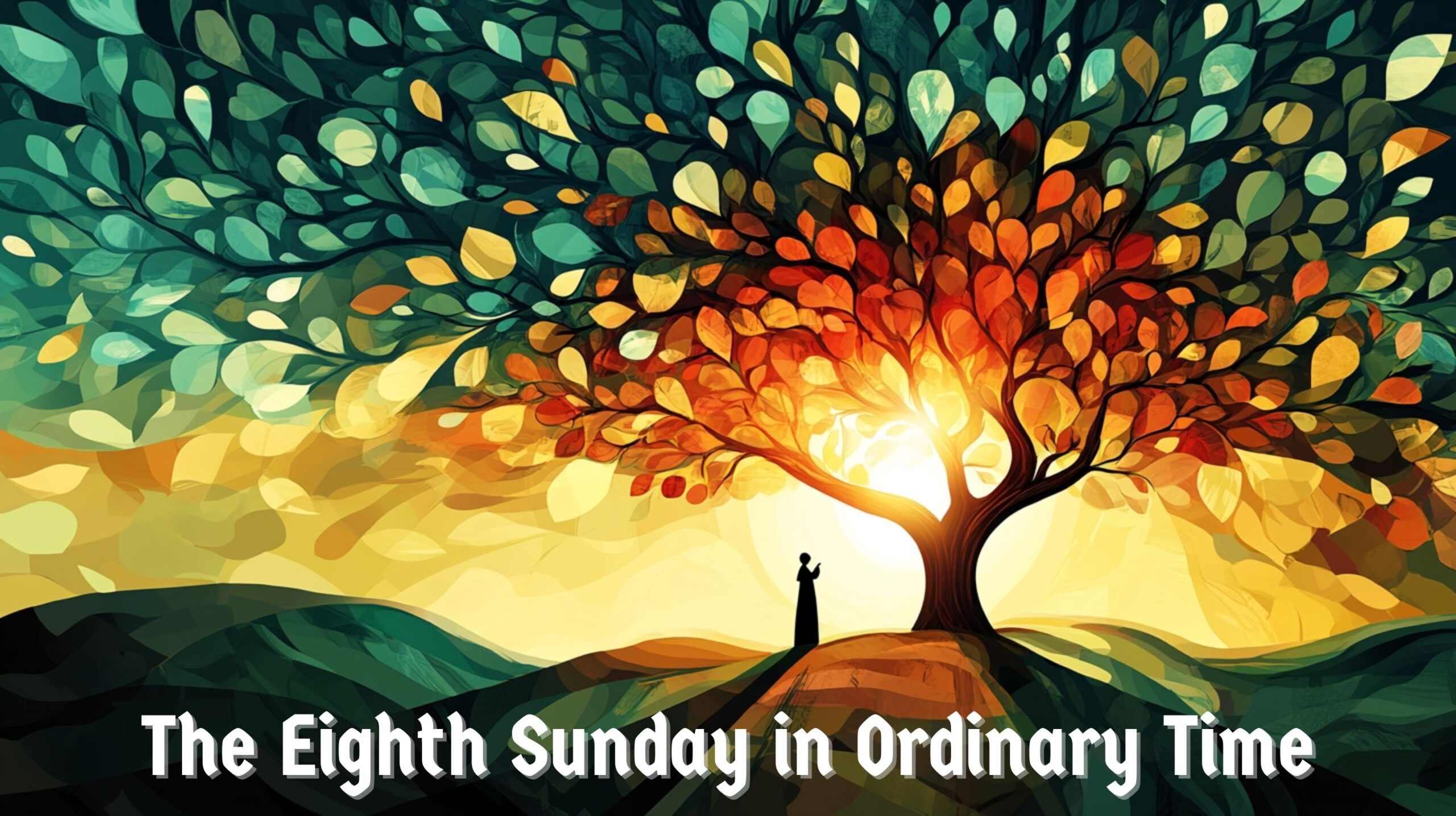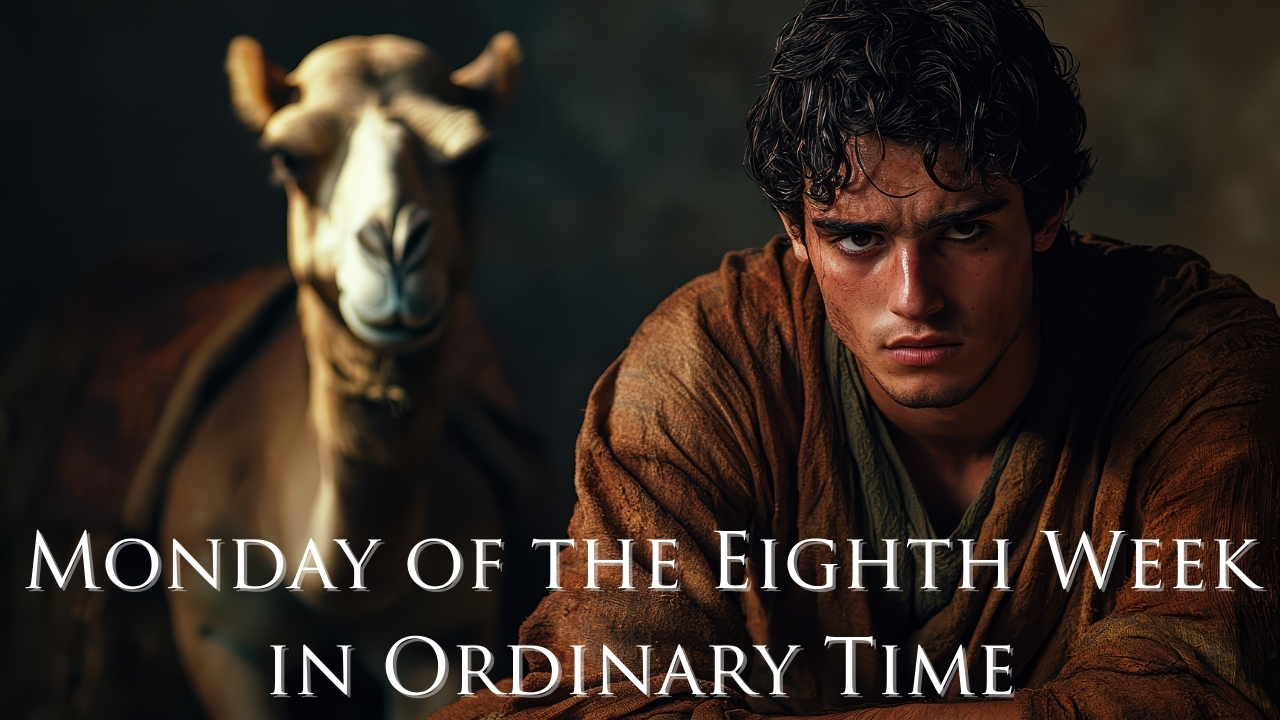The Suffering That Saves: When Darkness Yields to Light | Good Friday Daily Readings | April 18, 2025
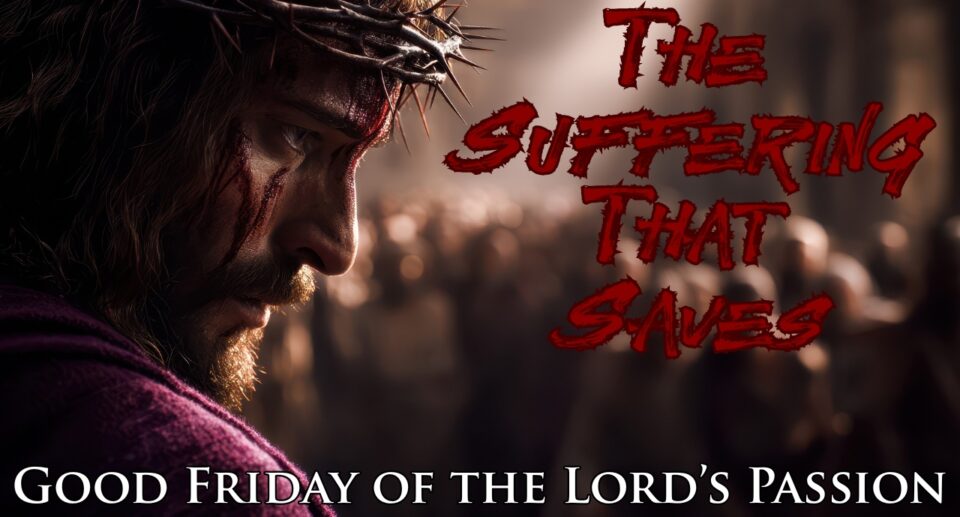
Today we stand at history’s darkest moment that paradoxically brings humanity’s brightest hope. Good Friday confronts us with the jarring reality of a God who suffers—the Creator who bleeds, the Immortal who dies, the Holy One who becomes sin for us.
Through this reflection, you’ll discover:
- How Isaiah’s Suffering Servant passage reads like eyewitness testimony of the crucifixion
- Why Jesus’ final words “It is finished” proclaimed victory, not defeat
- The three profound truths revealed through the mystery of the cross
- How suffering can be transformed into salvation in our own lives
Readings covered: Isaiah 52:13—53:12; Psalm 31:2, 6, 12-13, 15-17, 25; Hebrews 4:14-16; 5:7-9; John 18:1—19:42
Perfect for deepening your Good Friday experience and finding meaning in suffering through the lens of Christ’s passion.
#GoodFriday #LordsPasion #HolyWeek #SufferingServant #CrossOfChrist #SacredTriduum #PassionOfJesus
The Suffering That Saves: When Darkness Yields to Light
He hung between earth and sky, suspended between criminals, abandoned by friends. Blood trickled down his forehead from the crown of thorns, down his back from the scourging, down his hands and feet from the nails. His lungs burned as he struggled for each breath, pushing against the weight of his own body. His thirst was beyond description.
Then came the final words: “It is finished.”
Not “I am finished.” Not “It has failed.” But “It is finished”—tetelestai in Greek—the same word used for completing a task, fulfilling a mission, paying a debt in full.
Today we stand at the foot of the cross, witnesses to history’s darkest moment that paradoxically brings humanity’s brightest hope. Good Friday confronts us with the jarring reality of a God who suffers—the Creator who bleeds, the Immortal who dies, the Holy One who becomes sin for us.
Our readings today lead us gradually deeper into this mystery, revealing both the horror of the cross and its astonishing, transformative power.
Isaiah’s Suffering Servant passage, written centuries before Christ, seems less like prophecy and more like eyewitness testimony. It depicts one “spurned and avoided by people, a man of suffering, accustomed to infirmity.” This servant bears griefs not his own: “It was our infirmities that he bore, our sufferings that he endured… he was pierced for our offenses, crushed for our sins.”
The paradox intensifies as Isaiah reveals this servant’s wounds become our healing, his punishment our peace. Then comes the theological core: “The LORD laid upon him the guilt of us all.” The innocent one becomes the guilt-bearer, taking upon himself the weight of human evil without having committed any himself.
Our psalm gives voice to the interior experience of the crucified Christ: “My God, my God, why have you abandoned me?” Jesus spoke these words from the cross, which the Gospel writers recorded. These words express the most profound suffering—spiritual desolation, the sense of God’s absence. Yet even in this abandonment, there remains trust: “Into your hands I commend my spirit.”
The psalm moves from anguish to confidence, from the experience of God’s absence to the certainty of God’s presence: “I will proclaim your name to my brethren; in the midst of the assembly I will praise you.” Suffering leads not to despair but to deeper communion.
Then Hebrews reveals Christ as both victim and high priest of his own sacrifice. Unlike temple priests who offered animals’ blood, Jesus “offered prayers and supplications with loud cries and tears to the one who was able to save him from death.” His priesthood involves not detached ritual but personal agony. Yet through this suffering, “he was made perfect” and “became the source of eternal salvation for all who obey him.”
Finally, John’s Passion narrative unfolds with cinematic intensity—from the garden arrest to the courtyard denials, from Pilate’s wavering to the soldiers’ gambling, from the women’s vigil to the final cry. Unlike the synoptic Gospels, John presents Jesus in complete control even during his Passion. He doesn’t merely suffer events but directs them toward their intended completion. When soldiers come to arrest him, he steps forward: “I AM.” When questioned by Pilate, he educates the governor on the nature of truth and authority. Even on the cross, he ensures his mother’s care before declaring “It is finished.”
What emerges from these readings is not just the fact of Christ’s suffering but its meaning. This is not meaningless pain, not divine child abuse, not cosmic cruelty. It is love’s most profound expression—God entering human suffering completely to transform it from within.
The cross reveals three interwoven truths about our world and our salvation:
First, it exposes the reality and consequences of human evil. We prefer sanitized accounts of human nature, but the cross strips away comfortable illusions. Here we see what we are capable of—executing God incarnate when he threatens our systems and assumptions. As Alexander Solzhenitsyn observed after witnessing the horrors of Soviet gulags, “The line dividing good and evil cuts through the heart of every human being.” The cross confirms this diagnosis, showing the depth of the disease that required such a radical cure.
Second, the cross reveals the true nature of God. Not a distant deity observing suffering from afar, but a God who enters it completely. Not a God who demands suffering from others while remaining comfortable himself, but one who drinks the cup of human pain to its dregs. The cry “My God, why have you abandoned me?” reveals both the cost of our salvation and the lengths to which divine love will go to secure it.
Third, the cross establishes a new pattern for authentic humanity. Jesus’ willing sacrifice, his refusal to respond to violence with violence, his forgiveness of enemies, his entrusting himself to God even when God seems absent—all these establish the path of truly human living. As Christ hangs on the cross, we see humanity both at its worst (in those who crucify) and at its best (in the one crucified).
How do we enter into this mystery today?
The Church’s liturgy invites us to venerate the cross—to approach and honor the instrument of torture transformed into the means of salvation. This physical act represents our spiritual reality. We don’t merely observe the cross from a distance; we approach it, touch it, acknowledge its claim on our lives.
When we venerate the cross, we confess multiple truths simultaneously: We acknowledge our complicity in the sin that made the cross necessary We express gratitude for the love that transformed execution into salvation We accept the pattern of Christ’s self-giving as our own path
The Roman centurion, after witnessing Jesus’ death, declared, “Truly this was the Son of God.” Something about the way Jesus died revealed his true identity more clearly than any miracle or teaching. Similarly, as we witness the cross today, we’re invited to see beyond the horror to the revelation—to recognize God precisely in this moment of apparent defeat and abandonment.
Today we don’t celebrate the cross as suffering for its own sake. We commemorate it as suffering transformed into salvation—as darkness yielding to light, hatred overcome by love, death transfigured into life.
The early Church fathers often spoke of the cross as a trap for Satan—appearing to be God’s defeat but actually being his victory. They compared it to a fishhook concealed within the bait of Christ’s humanity. Death swallowed him, not realizing that in doing so, it was swallowing its own destruction.
On this solemn day, as we venerate the cross and receive communion consecrated yesterday (for today no Mass is celebrated), we stand in the tension between completion and anticipation. “It is finished,” Jesus declared, yet Easter remains ahead. The victory is won, yet its full manifestation awaits. We live in this same tension—between the “already” of Christ’s definitive triumph over sin and death and the “not yet” of its complete realization in our world and lives.
The appropriate response is neither despair nor premature celebration, but the quiet, confident trust expressed in the psalm: “Into your hands I commend my spirit.” We entrust ourselves to the One who entered our suffering, transformed our death, and waits to receive us beyond it.
As darkness fell over Calvary that first Good Friday, it seemed like the end—of Jesus’ ministry, of his disciples’ hopes, of God’s apparent plan. No one present, except Jesus himself, understood that this ending was actually the beginning of the world’s redemption.
Similarly, the apparent endings in our own lives—failures, losses, even deaths—may be, through the mystery of the cross, unexpected beginnings. The pattern established today—suffering transformed into salvation—becomes available to us through our union with Christ.
Today, if you are suffering, know that you have a God who doesn’t merely observe your pain but entered it personally. If you feel abandoned, remember the One who cried “Why have you abandoned me?” yet trusted still. If you face death—whether physical, emotional, or spiritual—recall that since Good Friday, death is no longer a dead end but a doorway.
The cross stands at the center of history and at the heart of our faith. Today we honor it not because suffering itself is good, but because this particular suffering brought the greatest good. We venerate it not to glorify pain, but to celebrate the love that transformed pain into healing, death into life, ending into beginning.
It is finished—the sacrifice complete, the debt paid, the way opened. Now we wait in solemn silence for the first light of Easter to reveal the full impact of what happened today on Golgotha, the place of the skull, where death itself began to die.
